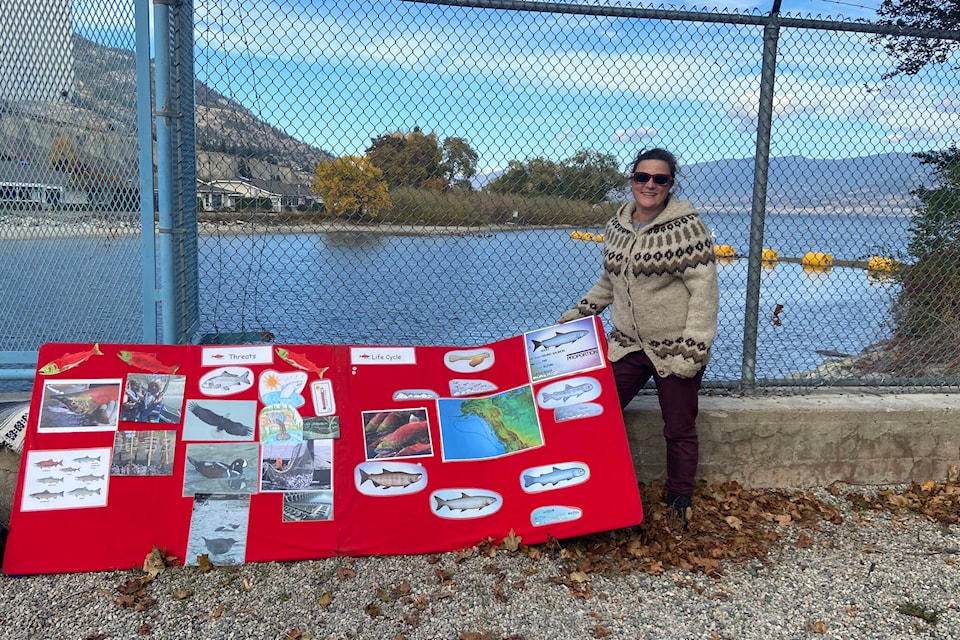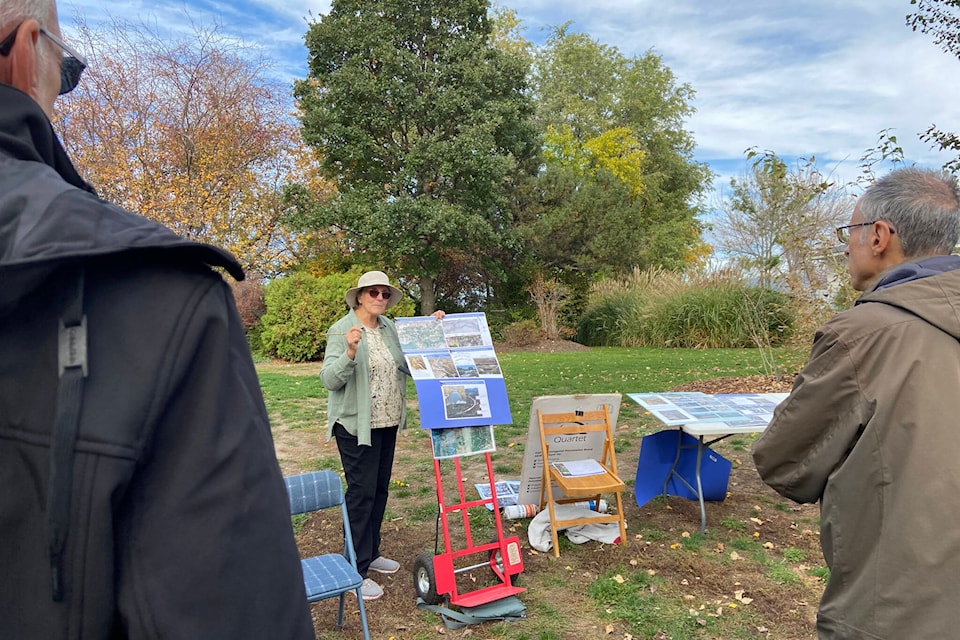ŽŃĮČ╩ėŲĄų▒▓ź£IŽŃĮČ╩ėŲĄų▒▓źÖm in awe of fish,ŽŃĮČ╩ėŲĄų▒▓źØ said Lee McFadyen to a crowd of about 40 people who came out to the Okanagan Lake dam in Penticton on Sunday to celebrate the return of the salmon and to find out more about Okanagan River restoration projects.
McFadyen, of the Okanagan Similkameen Conservation Alliance (OSCA) has played a role in re-establishing the salmon population for the past two decades.
Born in freshwater, the sockeye spend one year before they travel to the ocean where they spend two years or more in salt water. They go down the Columbia River and leave the estuary where the fish start to go through a physiological change getting ready to adapt to salt water. They actually more or less turn their kidneys inside out so they can handle salt water. Their gills have to change as well, said McFadyen.
From spawning to returning to spawn takes four years and the whole extraordinary journey is 6,000 km long.
ŽŃĮČ╩ėŲĄų▒▓ź£This project and learning so much about the salmon cycle has made me have so much respect for fish and their abilities,ŽŃĮČ╩ėŲĄų▒▓źØ said McFadyen.
Work north of Oliver to create natural areas and to put spawning beds near the McIntyre Bridge has brought huge success. Spawning beds and ladders have also been created all along the Okanagan River Channel.
That work is critical to the survival of the salmon because the Okanagan River is one of only two of the remaining sockeye salmon spawning grounds in the Columbia watershed, said McFadyen.
It has been a low sockeye return this year, with around 14,000 coming back to the Okanagan River.
But itŽŃĮČ╩ėŲĄų▒▓źÖs cyclical. In 2022, over 250,000 fish returned, said Ella Braden, also of OSCA who was at the dam explaining the fish life cycle and what salmonŽŃĮČ╩ėŲĄų▒▓źÖs main threats are.
For flood mitigation, diking and dams of rivers almost spelled the collapse of the salmon population in the Okanagan River. Channelling of the Okanagan River in the 1950s was done without thought for fish or without any consultation with the Indigenous people.
Thanks to the work of the Penticton Indian Band, Okanagan Nation Alliance and Okanagan Similkameen Conservation Alliance along with other groups who have worked tirelessly to make sure fish have a way to journey home.

In 2014, the Penticton Indian Band built a state-of-the-art hatchery that is key to the local salmonŽŃĮČ╩ėŲĄų▒▓źÖs success and can rear millions of eggs, said McFadyen. Of the 4,000 eggs a fish will lay, only one will make a return.
ŽŃĮČ╩ėŲĄų▒▓ź£ItŽŃĮČ╩ėŲĄų▒▓źÖs been a really well thought out conservation effort and partnership with Penticton Indian Band and Okanagan Nation Alliance,ŽŃĮČ╩ėŲĄų▒▓źØ said Braden. ŽŃĮČ╩ėŲĄų▒▓ź£The level of foresight in combination with the fisheries biology work has been the reason this project has been such a beautiful success.ŽŃĮČ╩ėŲĄų▒▓źØ
Technology has also helped them track the fish.
ŽŃĮČ╩ėŲĄų▒▓ź£We tag the tiny fish so we know where they are along their journey. We know when they hit the ocean and when and where they die,ŽŃĮČ╩ėŲĄų▒▓źØ said McFadyen.
OSCA gets their funding from Nature Canada and their main focus is going to schools to educate students. But these open houses are a great opportunity to show the public what important work is going on in the waters they live by.
Climate change is playing a role in the salmonŽŃĮČ╩ėŲĄų▒▓źÖs success.
ŽŃĮČ╩ėŲĄų▒▓ź£Heat and drought are not new for this area but I donŽŃĮČ╩ėŲĄų▒▓źÖt remember having 28 C nights like we do now,ŽŃĮČ╩ėŲĄų▒▓źØ she said. When the nights donŽŃĮČ╩ėŲĄų▒▓źÖt cool down that means the water doesnŽŃĮČ╩ėŲĄų▒▓źÖt either.



